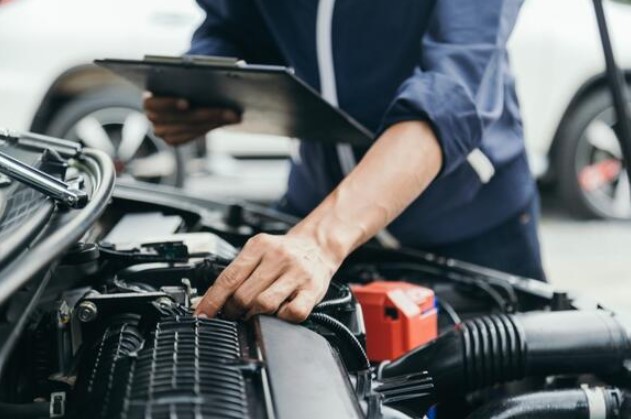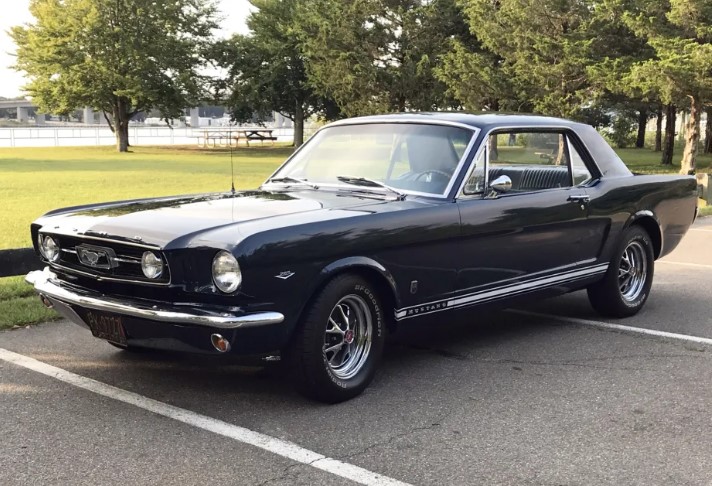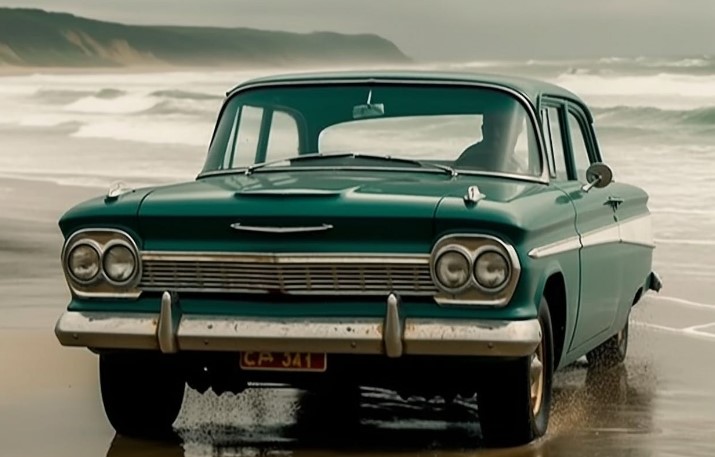The pandemic has enabled the sector that restores classic cars to flourish. What projects are going to help preserve these much-loved vintage vehicles?
Interest in classic cars has probably never been greater and, let’s face it, there are some wonderful motors out there to cherish or aspire to. Such demands are also keeping many workshops in the business of restoring such treasures particularly busy. Nigel Woodward, managing director of Bridgnorth-based Classic Motor Cars (CMC), says: “The classic car market is currently very robust, perhaps having something of a mini-boom, and values are firm. Although, much like the housing sector, it goes in cycles.” The pandemic has given classic car owners a bit more time to get some restoration work done in readiness for getting out and about again.
Looking at the market position: a classic car is defined as being at least 30 years old, so many are not very old in real terms. Moreover, with the advent of better rustproofing from the 1980s, more vehicles are lasting longer, are more reliable, and not succumbing to tin worm or terminal mechanicals. Time was if there was 100,000 miles or more on the clock, fortune would have only favoured the brave. With more cars with classic potential, from the relatively mundane to the dizzy heights of exotica, there’s something for every budget.
Another important driver, so to speak, is the move to more complex, hard-to-repair technology in today’s cars and onwards to electric motors and battery power. So might it be that more of us will be craving ownership of something less complex? Isn’t it much more appealing to see an engine and ancillaries under the bonnet in all their glory and not a swathe of hideous plastic? You may also yearn for pure, simple, and essential switches and much less electronics ‘that you might never use, let alone understand. What if it goes wrong, which it probably will? Expensively. Pre-digital cars could become even more sought after than their younger brethren.
Everything points to plenty of work for the restoration specialists for many years to come. After all, if you don’t have the wherewithal to DIY, you have to entrust the work to the experts, from minor repairs to total rebuilds – experts being multi-skilled technicians, engineers, coachbuilders, metal workers, and trimmers. All craftsmen and craftswomen, many at the top of their game, are passionate and pursuing a lifetime automotive purpose.
Putting the restoration business into its latest context, the range of work has grown somewhat with improvements and upgrades to a classic becoming more commonplace, while maintaining essential points of integrity. At the top end, purists know that rare, high-value cars should always be kept as original as possible. Investment dictat and all that. Keeping to factory spec – or as near as dammit, has probably become less challenging in recent times. Not only is there more specialist knowledge and uncompromising attention-to-detail expertise to call upon, but previously unobtainable parts can now be created to exact build specification more readily. A dichotomy that advanced digital scanning, CNC, and 3D-printing technologies are being used successfully to restore classic machinery.
If it’s appropriate and realistic, what’s best to make your classic car safer, more driveable, and enjoyable for the present day? For many mid-range vehicles, reliability, safety and even mild performance upgrades can be transformational. Simplistically, it’s the quest for a much nicer classic to keep. The next generation needs to appreciate that your motoring marbles were still there when it mattered.
“One of the current trends is a growing relevance not to over-restore a classic car,” says Woodward. “A respray will make a car look impressively ‘as new’, but we are all custodians with the responsibility of preserving our nation’s motoring heritage. Keeping the patina of old paintwork, brightwork, veneers, and upholstery with the marks of age and weathering maintains a car’s history. Preservation can often be more relevant than a showroom-quality restoration.” There is also the matter of not overspending, particularly on middle-of-the-road classics. Retrimming an MGB GT with the finest leather, for example, might not be such a wise move. Unless you really want to.
‘A respray will make a car look impressively ‘as new’, but we are all custodians with the responsibility of preserving our nation’s motoring heritage.’
To serve the growing demand for classic cars of any genre, the restoration sector has a clear mission to develop its workforce and equip them with the necessary range of specialist skills, experience and knowledge. It’s about attracting those who want to learn a range of ‘in-demand’ traditional skills. Woodward explains: “Training is certainly our number one issue. Most technicians of the current era would probably not, for example, be able to strip and repair a carburettor, overhaul old braking systems or electricals. We have our own CMC apprenticeship programme, which is particularly successful in helping young people to become proficient in a wide range of restoration disciplines. But neither we, nor the other leading specialist workshops – all small businesses – can deliver all the required training by ourselves. Government funding is patchy, but this is our national motoring heritage that we are talking about.
“Another issue is about keeping on top of legislation. On the one hand, some might feel relaxed about MOT exemption for older cars, but our view is that MOT standards should be maintained. Every vehicle that leaves our workshop carries an MOT certificate.”
If there is an elephant in the workshop, it may well be electrification. In time, classics conversions may start to swell from the current very low base – interest is certainly there. Simplistically, when you swap internal combustion for a bit of ‘Tesla-type’ tech, performance gains can be dramatic. But for now, at least, such a move is likely to be governed by the fact that the zero-emissions route is extremely expensive. And then there’s the purist thing again – we will see what happens.
Technology is changing our world, perhaps at a faster rate than some of us would like. But when you step into the vibrant, enchanting, big wide world of classic cars, it is heart-warming to see our motoring heritage so very much alive. Long may it be so. For as long as you can buy a gallon of petrol.
Jaguar E-Type: sixty years young
Arguably the most definitive of classic British sports cars, the Jaguar E-Type (pictured above) remains high up the automotive legend leader-board. Sixty years after launching at the 1961 Geneva Motor Show, the E-Type remains a sheer joy to behold, whether fully and expensively restored or as a well-maintained and cherished example. Who could ever resist an E-Type? Thought so.
Not surprisingly, Jaguar Land Rover Classic Works at Ryton, one of the largest facilities of its kind in the world, leads the way in restoration of the Great British icon. The E-Type Reborn programme offers customers with a Series 1 E-Type true and authentic-to-showroom conditions starting with a base vehicle sourced by Jaguar, then a complete restoration according to the company’s original factory specification with Jaguar Classic parts used to maximise quality, longevity, and collectability.
Some customers specify their ‘Reborns’ with sympathetic upgrades and enhancements to suit today’s motoring. Requirements include improvements to brakes and suspension, a five-speed gearbox, power steering, wider wire wheels and tyres, modern infotainment, and air conditioning. Not surprisingly, thousands of hours go into each E-Type Reborn depending on the donor car’s condition.

Image credit: Matt Howell
Celebrating the car’s diamond birthday, Jaguar is producing the E-Type 60 Collection comprising a programme of 12 cars – six roadsters and six coupes – honouring registrations 77RW and 9600HP, two of the most famous E-Types ever made, for their epic and fast journeys to Geneva 60 years ago. The cars will have a number of engineering refinements including a five-speed gearbox, uprated cooling, electronic ignition and stainless-steel exhaust. Unique detailing inside the car includes a ‘road to Geneva’ engraving, commemorative E-Type 60 logo finishing and a light-beech steering wheel as fitted to the 1961 cars. The prices have not been publicised by Jaguar – an E-Type Reborn comes in at around £315,000; reckon on about £650,000 for each Collection pair.
Your E-Type experience can go one better. If your heart’s desire and wallet’s capacity is to have what might be described as the ultimate piece of 1960s automotive art, I suggest giving Helm Motorcars a call. Having sourced the finest examples for restoration from the UK and across Europe, company founder Chedeen Battick is producing 20 Series 1 E-Types. The specification ticks every possible box; the result: an exquisitely engineered E-Type of the highest quality, artistry, and detail finishing. The base price is £420,000 before adding your own extras.
Clearly, the Jaguar E-Type story was never going to conclude when the last Series 3 rolled off the production line in 1974. Already many surviving cars are being made even better, and others cherished to the nth degree. The E-Type’s inspiring shape – “the world’s most beautiful car” according to Enzo Ferrari – has surely made the caring responsibilities hugely rewarding. In 2061, the E-Type will celebrate its centenary… lucky if you can be there.
The Aston Martin Bulldog: a year of restoration and history
Launched in 1980, the William Towns-designed Aston Martin Bulldog was, by any measure a stunning-looking concept car. Its mission: to prove the company’s engineering prowess. The goal: 200mph and claim the production-car speed record. Bulldog reached 191mph at MIRA, but the project was cancelled by then Aston Martin chairman Victor Gauntlett. For the next 40 years the only Bulldog ever built went into obscurity, but now it’s back and in the final stages of restoration. Significantly, Classic Motor Cars are preparing Bulldog to achieve the magical 200mph. Other supercars have gone quite a bit faster since 1980, but who cares?
Since it arrived at CMC’s superbly equipped facility, the full history of where Bulldog has been since Aston Martin sold the car is also being pieced together. Gauntlett’s son Richard, who is managing the project, says: “There had been Bulldog sightings all over the world; it was spotted in a lock-up in Arizona, seen back in the Middle East in the 1990s and finally RM Sotheby’s found the car in Asia.”
Sotheby’s car specialist Alexander Weaver adds: “We are always on the hunt for unique, elusive or obscure cars – Bulldog fitted that bill perfectly. The owner agreed to part with his unique Aston Martin and we facilitated the sale to our client Phillip Sarofim, through our Private Sales division. We are certainly excited about the restoration and eager to see Bulldog crack 200mph as it was intended and came so tantalisingly close.”
CMC’s Woodward says: “Bulldog has been with us for over a year; we have carefully dismantled the car and meticulously recorded every detail of its construction. Work has involved peeling back some of Bulldog’s later additions and modifications after it left Aston Martin. The process is now well under way to return the car to its former glory.”
Darren Turner, Aston Martin works and development driver, is already lined up for the 200mph goal. Richard Gauntlett says: “A critical part of the speed attempt was finding the right driver and someone that could get involved in terms of setting up the car and testing.” Not surprisingly, Turner said that he didn’t need to be asked twice.
Having got so close to 200mph previously, and with all the expert care and meticulous attention to the car at CMC, it’s hard to imagine that Bulldog won’t crack it. More than that, Bulldog will be much more the car it should have been. “We are productionising the car,” says Woodward. Aston Martin’s original intention was to build 25 Bulldogs.
Bentley creates brand new 1929 Blower Continuation Series
Rarely does a heritage automotive project come along that has it all. But for Bentley, the dream opportunity was to recreate its legendary 1929 Blower race car. Specifically, Car Zero – the development prototype followed by a continuation series of 12 customer cars, which were all pre-sold.
Step one was an extensive analysis of the car’s original drawings and on to carefully dismantling the company’s prized and extremely valuable Blower #2, piece by piece. Then, old-world met new-tech, spending 1,200 man-hours re-creating the car in the digital world using precision laser scanning and intricate measuring. The finished CAD model amounted to 630 components across 70 assemblies. Armed with the necessary data, in-house technicians and external suppliers were then able to produce nearly 2,000 individually designed parts for Car Zero.
The chassis was created in heavy-gauge steel, hand-formed and hot-riveted by a company that traditionally makes steam loco boilers. Specialists were also used to craft exact recreations of the Blower’s key components – including the mirror-polished, nickel-silver radiator shell and the hand-beaten, steel and copper fuel tank. The car’s leaf springs were made to original specifications by a business that originated as a blacksmith’s forge, while the Blower’s iconic headlamps were also reborn to original specifications.
A new ash frame was created before undergoing the final stages of carpentry with 25m of Rexine material wrapping the body. Hand-trimming was completed by Bentley’s Mulliner master craftsmen, and the gloss-black bodywork was paired with oxblood red Bridge of Weir leather and matching trim, while the car’s seats were stuffed with 10kg of natural horsehair. Everything is akin to stepping back in time.

Image credit: Helm Studio
Car Zero’s brand-new four-and-a-half-litre engine, originally designed by WO Bentley, was also created with specialist support. It features aluminium pistons, overhead camshaft, four valves per cylinder, twin spark ignition, and a newly machined Amherst Villiers roots-type supercharger. In essence, the new Blower engine is an exact recreation that powered Tim Birkin’s four Team Blowers.
Converting and preparing the engine testbed, originally built to test Rolls-Royce Merlins, involved making a replica Blower front chassis, which was mounted to the computer-controlled engine dynamometer. New software allowed engineers to run and monitor the engine to precise parameters.
Finally, with Car Zero complete, the project moved on to a driving programme to test functionality and robustness under ever-harder conditions. Designed to achieve the equivalent of 35,000km of real-world driving, across 8,000km of track driving, events such as Peking to Paris and the Mille Miglia will be simulated. Ultimately, Car Zero will be taken to its top speed.
Now, with more than 3,200 miles completed, Bentley engineers have learned a great deal about the car. “Car Zero has fundamentally been extremely strong and reliable, with only minor teething issues that testing is designed to uncover,” says Mike Sayer, Bentley’s head of product communications. “The finishing on some parts has been improved to prevent corrosion, we’ve adjusted the throttle linkage and made the brakes more effective. The chassis and engine of the car have been outstanding – Car Zero feels like a brand-new version of its older cousin with a tighter chassis and a fresher engine.”
All in all, a world-first achievement of its type – Bentley’s legendary spirit personified. Unreservedly.
Car audios
Traditional to digital transformation
Car audio is arguably the perfect classic car project to harmonise traditional with digital – the best of both worlds, cake and eat it fashion. With their finely tuned (sorry) know-how, specialists can transform existing audio equipment with Bluetooth, hands-free, music streaming, and DAB and FM radio. For appearance’s sake, original buttons are retained, digital displays sit in the original slider space, and all are mounted in the existing radio chassis. Internal or external amplifiers hidden behind original grilles or acoustic carpet complete the job.
Why stop there if budget allows? A full infotainment and satnav system? Listen carefully, 007: Derby-based Classic Car Radio has installed a Bond-style articulating panel into an Aston Martin DB5 to reveal a ‘sonar’ screensaver. Still not satisfied? Add Apple CarPlay and Android Auto, parking cameras, HDMI and dash cameras. Assuming that’s not taking things too far.
The experts’ considered view is to make installations as sympathetic and as reversible as possible, for the next generation to do things their way.
Sign up to the E&T News e-mail to get great stories like this delivered to your inbox every day.







More Stories
Old Mustangs for Sale: Navigating the Allure of a Classic Ride
Vintage Mercedes: Unveiling Timeless Elegance and Engineering Mastery
Hemmings Classic Cars: Timeless Beauty on Four Wheels